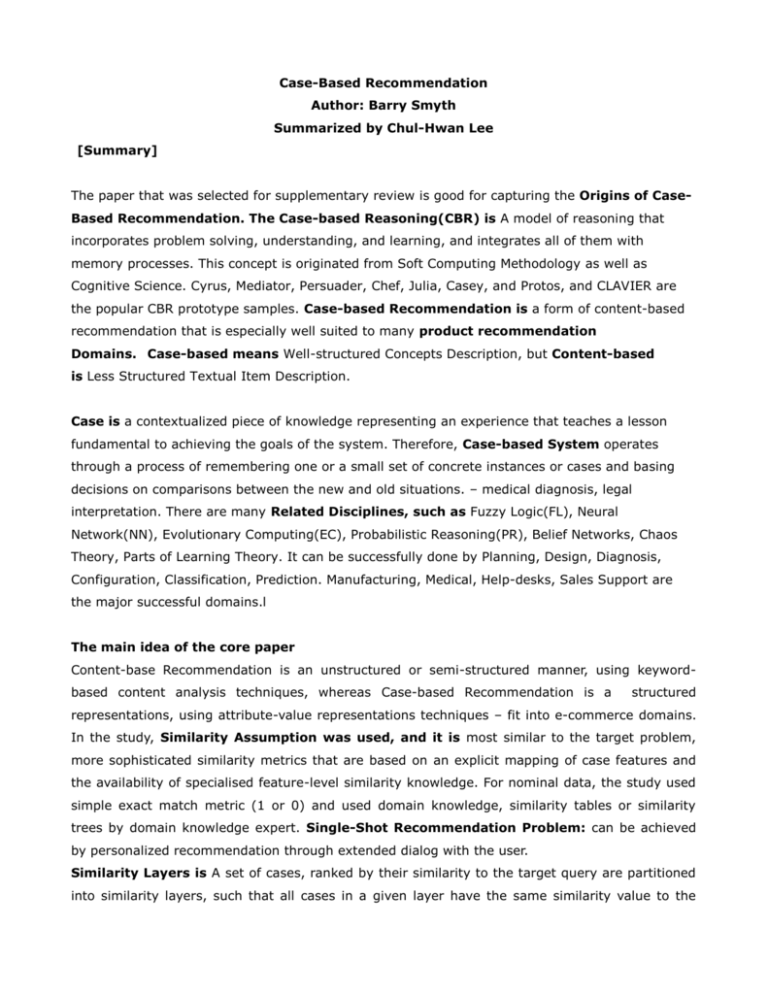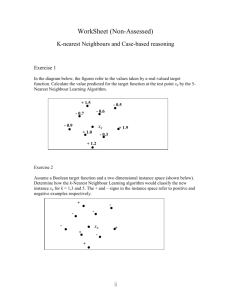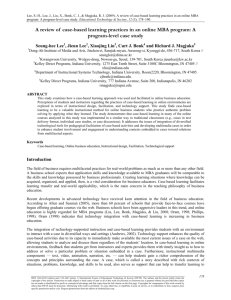Summary
advertisement

Case-Based Recommendation Author: Barry Smyth Summarized by Chul-Hwan Lee [Summary] The paper that was selected for supplementary review is good for capturing the Origins of CaseBased Recommendation. The Case-based Reasoning(CBR) is A model of reasoning that incorporates problem solving, understanding, and learning, and integrates all of them with memory processes. This concept is originated from Soft Computing Methodology as well as Cognitive Science. Cyrus, Mediator, Persuader, Chef, Julia, Casey, and Protos, and CLAVIER are the popular CBR prototype samples. Case-based Recommendation is a form of content-based recommendation that is especially well suited to many product recommendation Domains. Case-based means Well-structured Concepts Description, but Content-based is Less Structured Textual Item Description. Case is a contextualized piece of knowledge representing an experience that teaches a lesson fundamental to achieving the goals of the system. Therefore, Case-based System operates through a process of remembering one or a small set of concrete instances or cases and basing decisions on comparisons between the new and old situations. – medical diagnosis, legal interpretation. There are many Related Disciplines, such as Fuzzy Logic(FL), Neural Network(NN), Evolutionary Computing(EC), Probabilistic Reasoning(PR), Belief Networks, Chaos Theory, Parts of Learning Theory. It can be successfully done by Planning, Design, Diagnosis, Configuration, Classification, Prediction. Manufacturing, Medical, Help-desks, Sales Support are the major successful domains.l The main idea of the core paper Content-base Recommendation is an unstructured or semi-structured manner, using keywordbased content analysis techniques, whereas Case-based Recommendation is a structured representations, using attribute-value representations techniques – fit into e-commerce domains. In the study, Similarity Assumption was used, and it is most similar to the target problem, more sophisticated similarity metrics that are based on an explicit mapping of case features and the availability of specialised feature-level similarity knowledge. For nominal data, the study used simple exact match metric (1 or 0) and used domain knowledge, similarity tables or similarity trees by domain knowledge expert. Single-Shot Recommendation Problem: can be achieved by personalized recommendation through extended dialog with the user. Similarity Layers is A set of cases, ranked by their similarity to the target query are partitioned into similarity layers, such that all cases in a given layer have the same similarity value to the query. Order-based Retrival constructs an ordering relation from the query provided by the user and applies this relation to the case-base of products returning the k items at the top of the ordering. And Compromise-driven Approach the most similar cases to the users query are often not representative of compromises that the user may be prepared to accept. For User Modeling, the study used User’s personal preference, User’s learned preference, Weak personalization to Strong personalization, Long term user preference information. This can be achieved by questionnaires, user ratings or usage traces, asking the user to weight a variety of areas of interest, normal online behavior patterns, Case-based Profiling, Profiling Feature Preferences. Towards to Hybrid Recommendation System would be the next goal, so there will be need to explain the results of their reasoning, to justify their recommendations, and in/with product space. Follow-up Papers and discussion There were nine follow-up summaries for this CBR technique. The following is the topics of those papers. Personalized Conversational Case-Based Recommendation Case Based Session Modeling and Personalization in a Travel Advisory System Designing Adaptive Hypermedia for Internet Portals: A Personalization Strategy Featuring Case Base Reasoning With Compositional Adaptation A Web based Conversational Case-Based Recommender System for Ontology aided Metadata Discovery Using Collaborative Filtering Data in Case-Based Recommendation Improving Recommendation Ranking by Learning Personal Feature Weights Mining Navigation History for Recommendation The Adaptive Place Advisor: A Conversational Recommendation System There was few discussion to mention here about the topic. References [1] Pal, S. & Shiu, S. Foundations of Soft Case-Based Reasoning, Wiley Series on Intelligent System, 2004. [2] Smyth, B. & Cotter, P. A personalized Television Listing Service, Communications of the ACM, 2000, 107-111. [3] Goker, M. & Thompson, C. Personalized Conversational Case-Based Recommendation, Journal of Artificial Intelligence Research, 2004, 1-36. [4] Ricci, F., Cavada, D., Mirzadeh, N., & Venturini, A. Case-Based Travel Recommendations, 2005, Retrieved from http://ectrl.itc.it:8080/home/publications/2005/cbr-cabv3.pdf on Sep. 2005.






